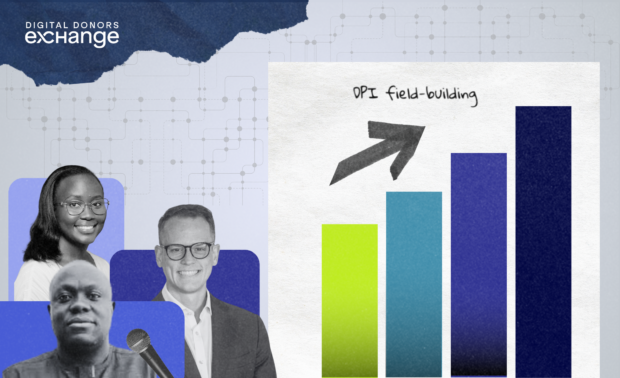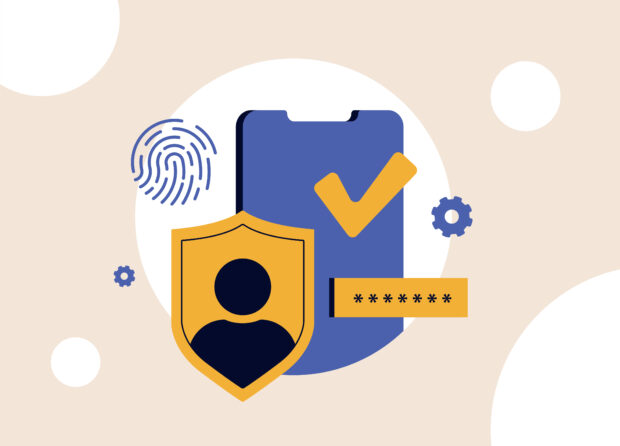The importance of ecosystem building has been a common theme throughout my career, beginning with my role at the Bill and Melinda Gates Foundation nearly 20 years ago. I’ve witnessed firsthand the importance of fostering institutional capacity, knowledge-sharing, and international norms to drive successful international development efforts. But this concept isn’t new – there are many well-known successes across industries, particularly in the field of financial inclusion. As we work to foster a positive digital development ecosystem, we must reflect on – and harness – the lessons learned from these earlier initiatives.
Microfinance has fostered economic inclusion and empowerment for millions across the world. We can learn from its history.
The microfinance movement started fifty years ago with pioneers like Mohammed Yunus who in 1976 founded Bangladesh’s Grameen Bank, the first microfinancing institution in the world. He was operating on a belief that, despite popular opinion at the time, extending financial services to those in poverty was possible.
As it turns out, he was right.
Small loans proved to not only be financially viable to deliver, but also empowering to women who had previously been dependent on informal lenders, rotating savings groups, and other means of money management. These loans and savings facilities provided by Grameen Bank – and subsequently other frontier institutions like BancoSol, SEWA, BRAC and several others – proved to be important vehicles for women to finance school fees, unexpected trips to the hospital, or simply to smooth basic consumption and keep food on the table. These benefits are still being felt today, as women account for 97% of the bank’s 10.5 million members. Since its inception, the Grameen Bank has provided over $37 billion in loans, 96.8% of which have been repaid.
Yet, for the results to be duplicated, international will - and collective effort – were essential.
Recognizing the promise of Yunus’s idea, the international community took interest. Yet, as with many new innovations, one of the biggest roadblocks was understanding how best to recreate results across countries, cultures, and norms.
This is where the Consultative Group to Assist the Poor (or CGAP) has played a critical role.
Established in 1995, CGAP is an alliance of global funders united by a common belief in the potential of inclusive finance – and its ability to meaningfully benefit people. While today, CGAP focuses on financial inclusion more broadly, the organization’s original mission was fueled by a desire to bridge the knowledge and implementation gaps hindering the burgeoning microfinance ecosystem. CGAP employed a “spin up and spin out” approach to creating some of the most valuable industry tools that supported the broad set of microfinance stakeholders – practitioners, donors, banking professionals, regulators and others. As a donor at the Bill & Melinda Gates Foundation, I relied heavily on some of the tools that CGAP developed in partnership with others, including:
- The Microfinance Gateway. Renamed FinDev Gateway in 2018, this was the first online repository for microfinance resources, publications, and research. It was the go-to resource for any new insights on the evolving field of microfinance.
- MicroRate. As the first microfinance credit ratings agency, today, MicroRate has completed more than 1,700 assessments worldwide and has been instrumental in driving commercial capital into small lending operations.
- MicroBanking Bulletin. This was the field’s first attempt to standardize metrics to evaluate microfinance banks and allow them to benchmark themselves across peers, thus, raising the bar on performance.
- The Boulder Institute of Microfinance. As the first training center for inclusive financial practices, today, the Boulder Institute has trained thousands of practitioners in operational practices that maximize impact and scale.
- SmartAid Index. This was informally known as the report card for donors funding microfinance initiatives and helped funders know what they needed to do to be more effective in advancing the movement.
These initiatives and so many others have played a critical role in supporting, scaling, and promoting inclusive financial practices – particularly microfinance – across the world. And, importantly, many of these initiatives evolved into new organizations or suspended operations because their job was done. When it comes to fostering ecosystem maturity, organizations like CGAP are critical in their ability to connect and align likeminded organizations, institutions, and actors for the public good.
So, what lessons can the digital development community harness from these successes?
In many ways, the arc of digital inclusion mirrors that of the financial inclusion sector in its infancy. Like early proponents of microfinance, the digital development community is united by a shared belief that, when correctly implemented, technology can be uplifting, empowering, and liberating to people. This is especially true for those living in low and lower-middle income countries, who have historically been excluded from the benefits of digital innovation.
Yet, while there is extreme optimism around the promise of technology – and emerging systems such as foundational digital public infrastructure – the field remains underdeveloped in terms of the global goods that can fuel the pace of adoption. My colleague, Chrissy Meier, conducted a series of consultations which resulted in a shared vision of the broader institutional needs in the digital development community. This includes the need for globally maintained reference architecture and products, knowledge networks, research institutions, training facilities, data repositories, and more.
Without these global goods in place, the efforts to scale national foundational digital systems remain fragmented. In other words, the good intentions to drive adoption could be hindered by the singular focus to drive adoption.
At the Digital Impact Alliance, we constantly think about this tension between acting now and acting for the future. While there may not be a single, exact answer, we can draw from the financial inclusion sector to remind us of the criticality (and accelerating force) of global, ecosystem investments. With pressures of international aid intensifying, the digital development community must foster the shared vision – and collective will – critical to successful ecosystem-building efforts. Rather than focusing solely on point solutions, we must prioritize the foundational tools, systems, and understanding that will ultimately lead to greater longer-term impact. The financial inclusion sector did it – and the results are clear.
Digital transformation will continue to accelerate. We must make sure we get it right - for the sake of people and communities across the world.
Let’s be honest, a digital world is a given. It’s in our collective best interest to make sure it’s one we want to live in. As we look to the future, the financial inclusion sector, and CGAP in particular, can – and should – serve as an inspiration to the digital development community.
We can reach ecosystem maturity – we’ve seen it happen. The difference is, for digital transformation, the stakes are even higher.
Let’s make sure we get it right.




